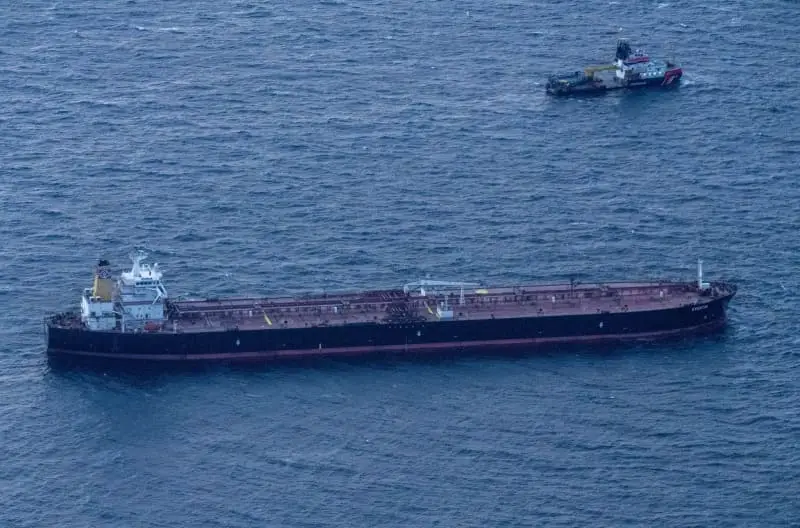When someone suggests I get up to greet the dawn, there is always a pause … but part of the joy of travel is that you find yourself saying yes, even to bad ideas. Pablo, my guide, has warned me: dawn can be incredible, do not miss it. So when the first gleam of pinkish light hits the east-facing curtain, I leap up.
From the terrace, there is a steep drop to the surface of the lake, which has the patina of hammered copper. A string of seagulls dances across. Seagulls at 4,000 metres in the mountains! Far away the snow-capped Bolivian peaks of Illampu rise from a rose-coloured shore and pierce the immaculate blue of the sky where the last stars are fading. Pablo appears, then Francisco, and we stand in silence, awestruck, until Francisco can no longer contain himself. “Come on. The fishing nets are waiting.”
Lake Titicaca is one of the world’s great sights. A vast inland sea improbably located in the sky. If it were in Europe, its surface would be above all the highest peaks in Switzerland and Austria, and its area would measure more than twice the size of all their lakes combined. As we follow Francisco down to his boat, Pablo is rolling out a series of astounding facts about his homeland – he was born on the larger island next to this one, Isla de Luna. “The first Inca king emerged from that water. There are seahorses living in there. There are lost cities. Look!” Reaching the shoreline, he stoops and picks up a stone. I make out a constellation of tiny fossilised sea shells.
I’m on the second stage of my journey from the heights of the Andes down to the mouth of the Amazon. From Cusco in Peru, I caught a bus to the busy city of Puno on the shores of Titicaca before crossing the border into Bolivia, then catching a boat taxi out to a pair of islands in the lake, the Sun and the Moon – where I am now. If Titicaca was never a serious contender as the source of the Amazon (it’s in the mountains to the north), it is the cultural heart for Indigenous people. The Bolivian end of the lake is much quieter, mostly catering for local holidaymakers and backpackers.
Francisco unties the boat and we motor out towards the sun. Titicaca is one of those locations that we usually hear about only when something is wrong. Before I saw it, I knew it was experiencing reduced water levels, overextraction, over-fishing, rampant pollution, invasive species and the extinction of several endemic types of fish. In my mind, this drip feed of despair was sinking it towards being a sump pond next to a motorway slip road, certainly nothing like this. I can’t stop grinning. It is so wonderful to be out on this magnificent expanse of water at dawn.
Francisco stops us at the southern tip of the island and hauls up a net. The tiny fish that come up are ipsi, a common endemic species. Among them is a kalanchi, which Francisco says “is rare these days”. I make sure it goes back in.
I’ve come out to these two rocky islands in the Bolivian part of Titicaca to see what effect tourism is having. Francisco tells me about his childhood. “In those days, there was no tourism. In fact, the island had a jail for political prisoners. My father was a revolutionary and in 1972 helped some of them escape. One became vice-president of the country.” He laughs and shakes the net, releasing a shower of living silver into the boat and over the side. “After the jail closed,” he says, “some experts identified the ruins next to my house as the Incan Temple of the Virgins. Then people started coming to visit.”
At that time, he says, all the men on the island, about 27 of them, were full-time fishers. “Now there are only seven fishers left – all the others are working in tourism.” He started a homestay, others have found work as guides or boat taxidrivers. He finishes pulling in the net. We have made a good haul. Francisco grins. “And there are a lot more fish.”
Back at the house, Francisco’s wife, Maria, has prepared brunch and like dinner the night before everything comes from Titicaca and its shores. “Life is better now,” she says. “Tourist jobs mean young people don’t leave.” While she talks, she is plaiting coloured wool, weaving intricate patterned belts and bands which she sells to visitors. I ask about the patterns. “I learned them from my grandmother and she from hers, and so on. It’s like a history book.”
Francisco laughs. “A book no one can read.”
He wants to add two more rooms to the three he has already built. I ask if he will add wifi? He shakes his head. “On this island we are already connected – to the sun, moon and stars. What more do we want?”
I stroll around the temple ruins and go across the hill and down to the island’s only village. Here llamas and sheep graze on the shore next to flotillas of waterbirds: Andean coots and teal, but not the endemic flightless Titicaca grebe. The island has a regular boat service from the mainland only at weekends so now, midweek, it is blissfully peaceful. I swim out among the birds, surprised to find the water less chilly than expected.
In the afternoon, Pablo and I transfer to Isla del Sol, his home and a larger, more populated place with a daily ferry. “Most visitors only stay an hour,” he says, “so it’s quiet in the evenings.” He comes from a fishing family and has seen how tourism can transform life. “I grew up in poverty. We ate only fish and potatoes.” We walk to the Temple of the Sun, built about 150BCE then stripped of its gold and idols by Spanish conquistadores in 1538.
I’m staying at a simple hostel on the hill, run by Maria and her daughter. “There are no big hotel chains here,” she says. “The community would not allow it. Everything is small-scale and local. We built the place ourselves and carry everything up here on our two donkeys. There are no cars on the island.”
after newsletter promotion
Outside my room I watch a giant hummingbird on the flowering trees, the species is common here. An old man strolls past with some tools, heading for the terraced fields that are being prepared for the expected rains. Things are very dry. The much-reported drought in the Amazon is the result of no rain in the Andes, an annual dry period that has been exacerbated by El Niño and climate breakdown.
Attitudes here are stoical, it’s Covid they want to talk about: the experience feels raw and recent. Many lost their income and some hostels on the island are still closed. Later on my travels, I hear how some people needing cash took temporary jobs in the narco trade, heading off to coca-growing areas to work as pickers, cooks and labourers. Worldwide cocaine production (which means Bolivia, Peru and Colombia) has soared recently, now extending across an area that collectively would be larger than France, causing massive deforestation and pollution (coca plantations are heavily sprayed with pesticides, herbicides and artificial fertilisers). Low soil fertility for rainforest locations means the illegal farms move regularly, destroying more pristine forest.
After a night on Isla del Sol, I transfer by water taxi back to the small town of Copacabana, where some new swanky buildings are reputed to be the result of coca-dollar earnings. The atmosphere, however, is far from the Netflix-style narco world: it’s a peaceful, easygoing town where the main event of the day is a special mass in the basilica for the patron saint, Francis. His effigy is paraded around the square by ladies in full chola regalia of bowler hats, vicuña wool shawls and layers of petticoats. For many, chola has become a symbol of indigenous tradition and pride.
Street dogs sleep through the amplified sermon in front of the famed Blessed Virgin icon, brought here in 1583 by Tito Yupanqui, reputedly a descendant of the last Inca emperor Atahualpa.
Next day, I spend several hours walking along the lakeshore, searching for that elusive endemic grebe. I don’t find it, but I do meet Anna, a formidable elderly chola, who shows me around her village, Sahuiña. This fishing community wants to encourage tourism, but things are at an early stage.
There’s a village hall with comfortable rooms for hire at ridiculously low rates, but it looks unused. Anna and her friends invite me to a lunch of five types of boiled potatoes. However, I clearly do not eat with the appetite and gusto expected for such a feast. I can sense their puzzlement. Local visitors like large noisy restaurants built on rafts of reeds and plenty of boiled potatoes, but foreigners seem harder to please. Later, the villagers who are bundling reeds on to donkeys stop to watch me, nonplussed, as I photograph the birds. Eventually, I say goodbye and wander away to find a flock of Chilean flamingos that have flown in.
That evening I walk up the lakeside mountain that towers over Copacabana. There is a shrine at the top where worshippers offer symbolic models of things they would like God to send them. The most common prayer seems to be for a pickup truck, although more ambitious supplicants ask for a luxury bus or concrete mixer. After making their wishes known, everyone wanders over to look at the lake where the sun is setting. Two girls share an Instagram moment; some backpackers talk about sunsets in other countries; one man ignores the playful demands of his small daughter. Without any divine or human intervention, the sun sinks into Peru and turns Titicaca into a golden furnace. The girls put their phones down; the backpackers fall silent, and the man picks up his daughter and gives her a cuddle.
The trip was provided by Sumak Travel. Private 12-day tour of Lake Titicaca (Sun and Moon Islands), Uyuni Salt Flat and the Amazon rainforest (near Rurrenabaque) from £1,485pp including accommodation, domestic flights, guided activities, transport and some meals.
The third part of Kevin’s Amazon adventure will appear online on 1 July







